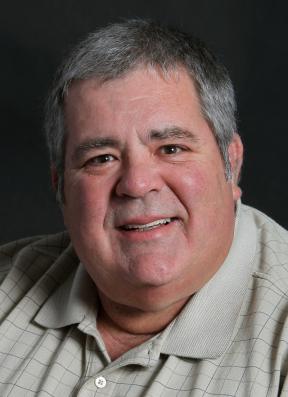MONTE DUTTON - SLOW DOWN TO GO FAST AGAIN
Click here to follow us on Twitter @circletrackplus Click here to like us on Facebook

It’s never a good sign when the blockbuster news is a driver going from behind the wheel to behind the microphone. What’s more, it’s the second year in a row.
Kurt Busch is moving to Chip Ganassi’s Chevy team, which means that Jamie McMurray, long the driver of No. 1, is out of a ride. He has joined the Fox television roster. A year ago, when Dale Earnhardt Jr. joined NBC, it was bigger news than McMurray. Then again, his loss from the race track was bigger, too.
They can’t drive forever.
In this space, I’ve written several times that it’s easy to come up with reasons why NASCAR is in decline. What’s hard is ranking the importance of those reasons.
If attendance was off because TV coverage is so good, then why are ratings going down at roughly the same rate? Cut through all the competing numbers, and the sport’s fan base is no more than half what it was a half-decade ago.
NASCAR has become a whirling dervish. The more it collapses, the more it whirls. If NASCAR were FDR, its message would be, “The only thing we have to change is … change itself!”
Before the sport can run again, it’s going to have to learn how to walk again. It’s been through a terrible crash.
Lots of myths are out and about:
The sport needs more short tracks. I believe that, but I’m not typical. More road courses. Short tracks and road courses aren’t doing any better, in terms of crowds and ratings, than the “cookie-cutters” some fans want to bankrupt and shut down. Please note that races on intermediate tracks were not always moribund. This year’s popular wave of change is actually designed to address this. Imagine that.
Local racing is doing great. It’s not. Some tracks are prospering. Most are struggling.
Go back to North Wilkesboro and Rockingham. Fans had a chance to do that already. They didn’t flock back to the old shrines.
The generation is changing in terms of competitors, not in terms of fans. The true believers are getting older. They don’t relate to many of the emerging youths. Christopher Bell has little in common with Buddy Baker. Bell has more in common with other young people advancing into the consumer mainstream. So far, they’re in mourning because the next World Cup doesn’t start until 2022. Somehow, some way, the youth have to inspire the youth. (This, by the way, was the inspiration of the main character, Barrie Jarman, in my two racing novels, Lightning in a Bottle and Life Gets Complicated.)
This should be a natural process. Kids should relate to race drivers who share their culture. Some of them undoubtedly do, but it’s not exactly noticeable. Maybe it takes time.
That’s just it. To slow the free fall, a parachute must deploy. I might be alone here in calling for an end to radical change and panic. NASCAR left much of its fan base behind. That’s fact. The goal now should be giving at least some of them a chance to catch up.
Lots of people are clearing big money making change. People don’t get such jobs by saying, “My advice is to just let things sit for a while. The fans aren’t coming back as a result of radical change.”
But they aren’t. People haven’t left NASCAR because they suddenly became environmentally conscious. They haven’t even left because they stopped liking it. The first sentence is always, “I hardly watch the races on TV.” The second is, “I used to love it.”
Hope still flickers. NASCAR officials have to hitch up their britches and go back to work. NASCAR needs what politicians call a ground game. It has to rebuild its brand without calling it “branding.” Put fannies in the seats again. Do what it takes. The best exposure of the sport, the spectacle and the personalities – surely they have them – is still up close and personal.





